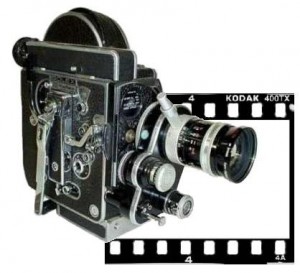
Growing up, my mom, sister and I looked forward to every Saturday evening for a new episode of the iconic show The Golden Girls. With our big bowl of popcorn, we would settle in to forget about everything else for 30 minutes as Blanche, Dorothy, Rose and Sophia gave us belly-deep laughs. The way the ladies shared stories at the kitchen table over cheesecake made you feel like the fifth Golden Girl getting in on the hilarious dialogue. Though some of the punchlines were over my head at the time, I understood the show was taking on current events in an innovative light. Years later when I moved to Brazil and yearned for something from home, I turned to old episodes of the show on YouTube. Plots I remembered from childhood held a new meaning as an adult, and I appreciated the story lines even more.
Each show centered on three middle-aged women and an elderly lady learning to live a new life after divorce and becoming widows. The sitcom resonated with young and old audiences with unique and captivating storytelling. From each of the Golden Girls I learned early on the power of stories.
Sophia Petrillo
Played by the hysterical Estelle Getty, Sophia was the outspoken, rowdy and sometimes crude mother on the show. An Italian immigrant, she always had a story to share about her time in the home country. She was the master of narrative transport, using vivid details to help the audience envision themselves in the setting. “Picture it, Sicily, 1937…” she would always start off her stories with sensory details about the beauty of a young peasant girl, the feel of the breeze off the ocean, the smell of the hot dogs at Coney Island, the sounds of a mandolin playing, or the heavenly taste of a perfect marinara. With these details, she drew in her audience and they could picture themselves standing in the middle of the action, making the impact of the story that much more memorable.
Rose Nylund
Played by the fabulous Betty White, Rose was the ditzy farm girl from Minnesota with Viking heritage. She had her own odd way of doing things, and she always liked to share off-the-wall stories that only made sense to her. In the middle of the gaggle of funny ladies, Rose often provided the comic relief and became the target for stress relief by the others. Her quirky stories, though funny, usually lacked meaning. She taught me you had to know where you were going in a story or you would get lost on your way to the point. Stories are meant to support an idea. Knowing the last line upfront can help you drive your story and lead your audience to where you want them to go.
Blanche Devereaux
Played by the charismatic Rue McClanahan, Blanche was the Southern Belle who used her charm to land almost every man in Miami. Her language, like her personality, was always flamboyant and she stood out in a crowd. When Blanche told a story, her passion exuded through her words, gestures and facial expressions. Taking a cue from her, storytellers can learn how to hold the audience’s attention through voice inflection, body language and overall enthusiasm for what is being told.
Dorothy Zbornak
Played by the no-nonsense Bea Arthur, Dorothy was the authoritative figure on the show. With her quick wit and sarcastic jabs, she pulled no punches. Though not the best or biggest storyteller of the group, when Dorothy did tell a story, she delivered a to-the-point narrative that zeroed in on the target audience. From her, I learned that your stories need to be tailored to your specific listeners to make an impact.
Other storytellers than The Golden Girls
Sophia, Rose, Blanche and Dorothy taught audiences for seven seasons about the power of storytelling through funny and heartwarming tales. Who else has influenced your storytelling style?



